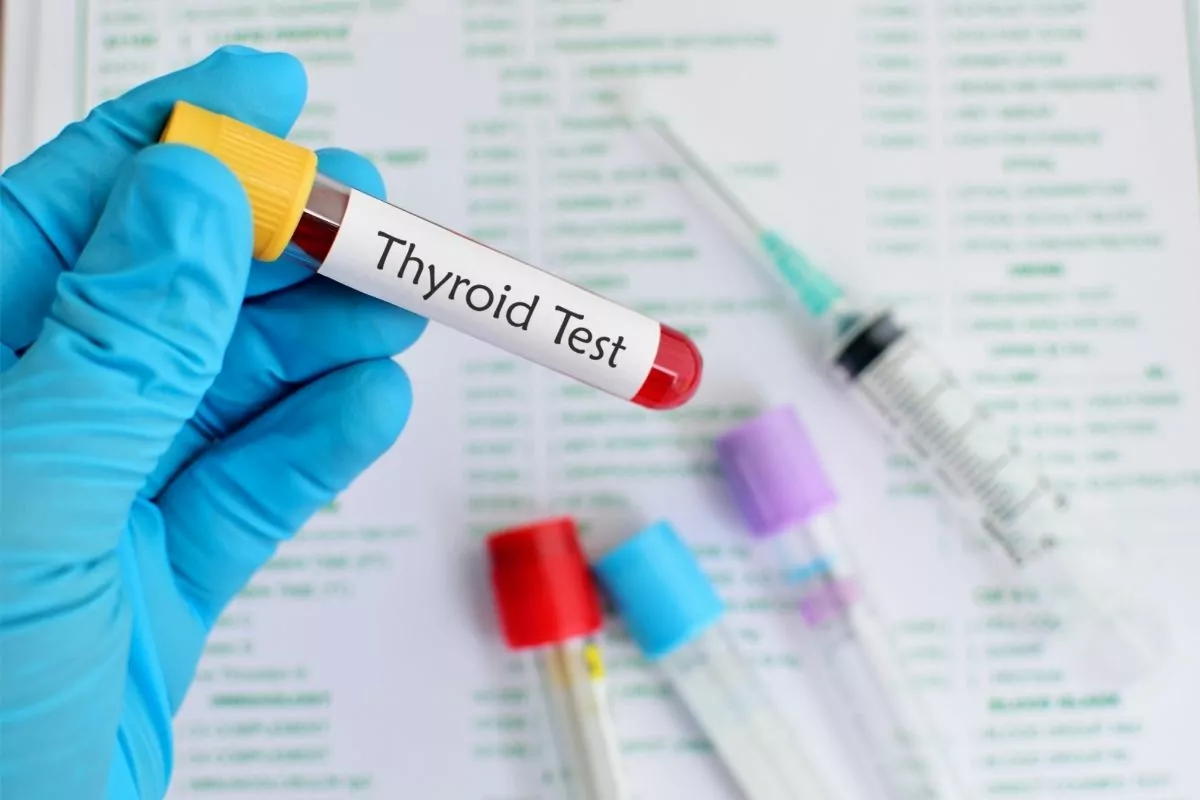Want to know more about hyperthyroidism in dogs or thyroid problems in dogs? Keep reading!
Do Dogs Have Thyroids?
Thyroid glands are an essential part of the endocrine system in dogs. They produce and regulate thyroid hormones triiodothyronine (T3) and Thyroxine (T4). Thyroid disease like hyperthyroidism in dogs is becoming to appear in veterinary practices, and it certainly is a topic worth learning and being familiar with.

What is Hyperthyroidism in Dogs?
To understand hyperthyroidism, you need to know the roles of thyroid hormones and how they are regulated within your dog’s body. Read on to find out more on dog thyroid levels:
As aforementioned, there are two types of thyroid hormones, T3 and T4. These hormones are involved in brain function, musculoskeletal growth, body metabolism, and the development and differentiation of body cells.
The hormones are regulated by a mechanism called The feedback loop system.
Thyroid glands are controlled by the pituitary gland, which is located at the brain’s base. The pituitary gland secretes a hormone called thyrotropin that stimulates the secretion of T3 and T4, which are made with iodine in the thyroid glands.
When the level of thyroid hormones within the blood increases above the homeostatic threshold, the pituitary gland stops secreting thyrotropin until the level is back to normal. This is called the negative feedback loop system.
Canine hyperthyroidism occurs when the thyroid glands of dogs become overactive and begin to produce excessive amounts of thyroid hormones. Very rarely, it may be the pituitary gland that becomes overactive and causes the excessive production of thyroid hormones.
Hyperthyroidism vs. Hypothyroidism in Canines
In contrast to hyperthyroidism, hypothyroidism occurs when the thyroid glands become inactive and do not produce enough thyroid hormones.
Hyperthyroidism can be caused by thyroid neoplasia (tumor), goiter (abnormal enlargement of thyroid glands), or less frequently by a medication used to treat hypothyroidism.
Many Hypothyroidism cases are caused by the damaging of thyroid tissues by lymphocytic thyroiditis or idiopathic atrophy of the thyroid gland.
Lymphocytic thyroiditis results from the body’s immune system attacking the thyroid glands, whereas idiopathic atrophy replaces the thyroid tissue with fat cells.
Hyperthyroidism causes an elevation of metabolic rates, and hypothyroidism does the exact opposite. Therefore, dogs with hyperthyroidism tend to have increased energy and appetite with a thinner body condition, while hypothyroidism makes dogs lose energy and appetite yet gain weight.
Hyperthyroidism is more common in cats and quite rare in dogs. On the other hand, hypothyroidism is a more commonly seen thyroid issue in dogs.
Thyroid problems in dogs are common in mature adult/senior dogs (between 4 to 10 years old) of medium to large size breed dogs. Example breeds are as follows:
- Airedale Terrier
- Cocker Spaniel
- Doberman Pinscher
- Golden Retriever
- Irish Setter
- Schnauzer

Signs of Hyperthyroidism in Dogs
Hyperthyroidism causes an increase in metabolic rates. Some of the hyperthyroidism in dogs symptoms are physiological changes directly resulting from this elevation:
- Weight loss
- Anxiety, nervousness
- Depression
- Diarrhea
- Enlarged thyroid gland
- Polydipsia (excessive drinking)
- Labored or heavy breathing
- Shortness of breath
- Tachypnoea (increased respiration)
- Increased appetite
- Increased energy
- Polyuria (excessive urination)
- Tachycardia (rapid heart rate)
- Abnormal heartbeat (gallop rhythm)
- Elevated blood pressure
- Poor fur condition
- Vomiting
- Gagging
- Cardiomegaly (enlarged heart)
- Facial swelling
- Hyper-excitability (hyperactivity)
- Difficulties swallowing
- Heart murmurs
- Increased vocalization
Hyperthyroidism tends to have a gradual onset, slowly over months or a few years. Some of the symptoms may not be present early, and dogs may be asymptomatic. Even if symptoms are present, they may not become severe until the later stage of the disease.
Available Treatments Options Against Canine Hyperthyroidism
Several options are available as a treatment for hyperthyroidism in dogs. Many types of veterinary drugs, such as carbimazole, suppress thyroid hormone production. This may be indicated for hyperthyroidism that is manageable simply via medical therapy.
Surgical removal of the thyroid gland (thyroidectomy) may be warranted if the gland of interest is neoplastic, a toxic form of goiter, or unable to be treated effectively with medical therapy alone. If neoplastic, the growth must be small-sized and must not have metastasized to other parts within the body.
However, the surgery may not be an option if the affected dog is senior, considered to have anesthetic risk, or if both thyroid glands are affected, as the removal of both glands can result in hypothyroidism.
For neoplastic hyperthyroidism, radioactive iodine therapy is generally the popular choice— a liquid radioactive iodine therapy. A liquid form of radioactive iodine (I-131) comes in an oral capsule or injection, which a veterinarian can administer.
Once in the body, it moves to the thyroid glands similar to regular iodine and gets incorporated into thyroid hormones. It destroys the thyroid tissue within the thyroid cells without damaging other body tissues.
I-131 will be eliminated from the body mainly through the urinary tract and lesser amounts through the feces. The dog is considered radioactive while I-131 is in the body and must be kept in isolation to prevent exposing other animals to the material. It may take between 3 to 10 days before the dog is deemed safe to come out of isolation.
There is much information about possible natural remedies for hyperthyroidism in dogs online: certain essential oils, herbs, and so on. Yet limited studies are conducted to analyze their efficacies quantitatively. Therefore, it is best to seek advice from your veterinarian first.
Although there are not many commercial diets specific for hyperthyroidism like Hills Y/D (which is for cats suffering from hyperthyroidism) available for dogs, a simple change in the dog’s dietary regime may help manage the condition better.
Limited iodine intake can reduce/prevent the excessive production and release of your dog’s thyroid hormones. Therefore, it may be a good idea to avoid offering food items high in iodine. These are processed food containing grains, cereal, and soy, excessive amounts of poultry or beef meat, egg yolk, kelp/seaweed, seafood, and dairy products.
Dogs with advanced hyperthyroidism may not be suitable candidates for any of the treatment options that have been mentioned above. Palliative care may be recommended for such cases.
What is the Function of the Canine Thyroid?
The thyroid is responsible for producing T3 and T4, which are the hormones that significantly regulate the body’s metabolic rate and are involved in neurological and musculoskeletal development.
The thyroid needs iodide (the precursor of iodine) to create those hormones; however, the body often does not produce enough iodine on its own. The body, therefore, supplements itself with iodide/iodine that gets absorbed from food items.
How is Hyperthyroidism in Dogs Diagnosed?
During the physical examination, palpations make a preliminary diagnosis of the enlarged thyroid glands. In addition, some invisible symptoms such as tachycardia (increased heart rate), hypertension (elevated blood pressure), and heart murmur may be detected during the examination.
Blood analysis that measures thyroid hormone levels can confirm the diagnosis.
Further diagnostics such as advanced imaging such as radiography, ultrasound, and scintigraphy may be required to determine the cause of the extent of hyperthyroidism which is essential to make a treatment plan.

The Outcome for a Dog Diagnosed with Hyperthyroidism
The prognosis of Canine hyperthyroidism varies depending on the stage of hyperthyroidism and causal factors. It has a better prognosis if detected early. A dog with hyperthyroidism can continue living and enjoying their life with appropriate treatment if the condition is manageable.
Although there is currently no known preventive measure for hyperthyroidism in dogs, there are a few things you can do to minimize the risk of developing hyperthyroidism, especially for breeds prone to this disease.
Simply being aware and having knowledge of canine hyperthyroidism, implementing a balanced diet (with an adequate intake of iodine), and regular veterinary checkups, especially for older dogs, can help lead to early diagnosis and management.
